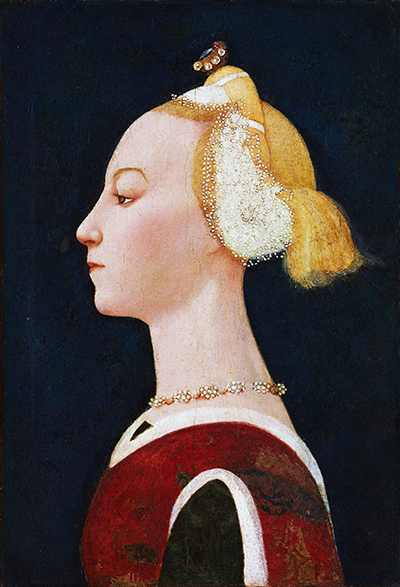This photo is a small piece of an oil painting by Paolo Uccello circa 1450. The composition comprises geometric shapes that form the feminine veil, the cleavage, the face, the arms and the light that illuminates the face and headgear.
The contrast between darkness and light reinforces the almost supernatural beauty of the model and its Gothic elegance. This photo appears at the Metropolitan Museum of Art in New York. In this work, it expresses the modest and cautious attitudes of women through the physique, and low eyes. She is skinny and draws according to the gothic ideals, depicted by slim shoulders, well-fixed hair, high forehead, delicate frame by the headdress. Paolo Uccello painted the portrait of a lady on a single oak board with a vertical grain of wood and unpainted edges on both sides. He then added a varnish based on oily pigment to make the shade thin and transparent.
The lady is portrayed in half a silhouette and three placed quarters of the outline was placed in the background of a dark blue-green two-dimensional interior. The background is flat and lacks attention for the common details of Paolo Uccello work. While working in the portrait, he focused his attention on the sitter with a black plane. In this work, the flat change allows the spectator to stall on the face of the woman. Paolo Uccello focuses on four basic features which include; feminine veil, the cleavage, the face, and the arms.
Paolo Uccello did not seem to want to bring a leading field which could distract us. He showed the lady at a small angle; posture focusing on the arms, shoulders and veil intertwined. The left ear of the woman is parallel to the eye, not the nose, and is abnormally high and deep. This position may be an art device used to continue the oblique flow of the right inner wing of the veil. Paulo insisted on the colour and the spectacle, and not on the classical realism developed by other artists while working in the late Gothic tradition. Today people describe his style as the most distinctive and he did not leave a follower school. In the 20th century he had an influence on literary critic and art.




